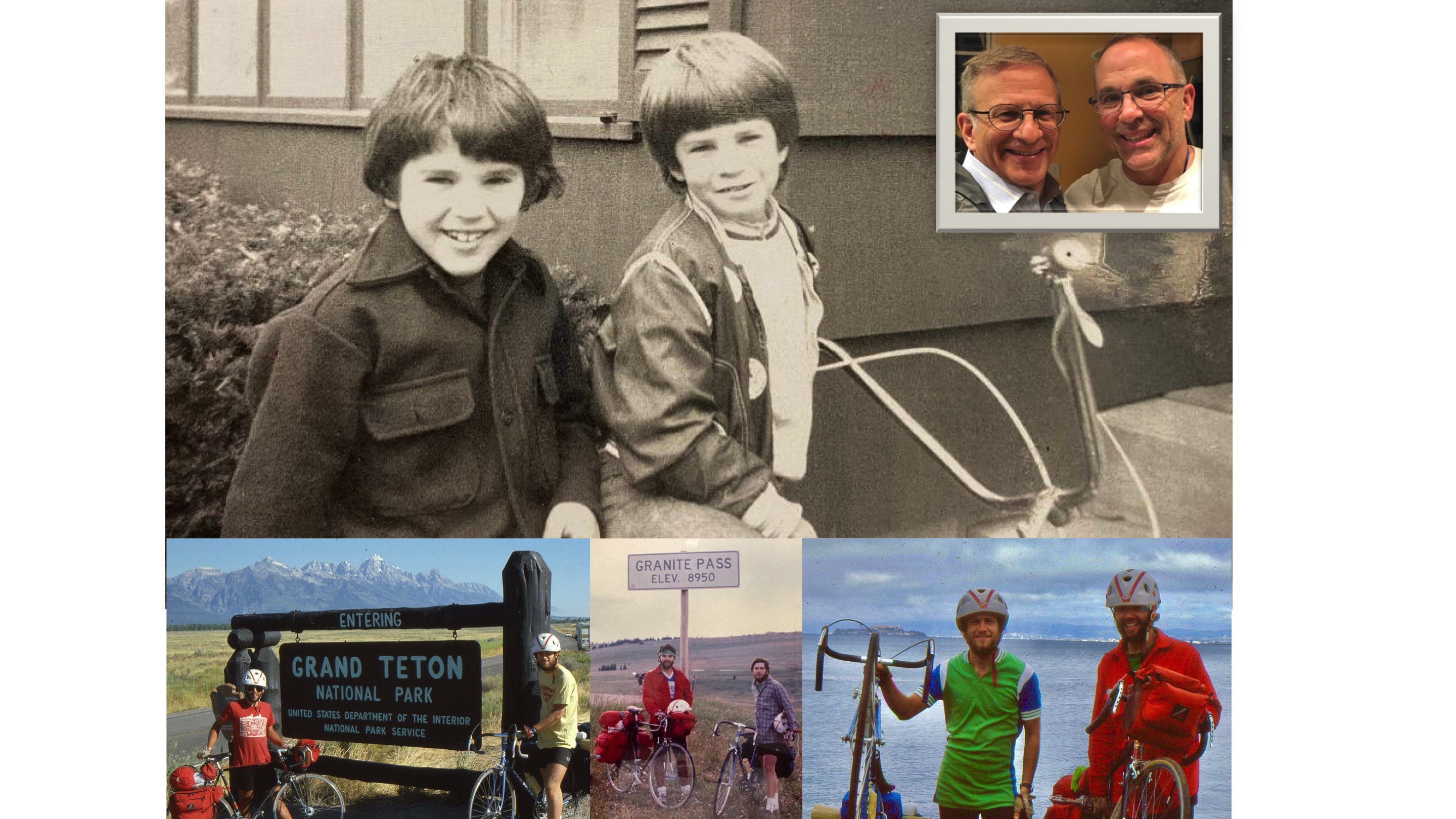
Long distance bicycle riding and sales have many similarities. Both require setting goals and following the process of continuous improvement, Kaizen, that leads to ultimate success. One rarely finds the 'holy grail' with one idea that produces success, instead it's many small improvements building one on another that lead to success.
Bicycles
Let's first dive into my hobby - long distance bicycle riding. As a child I wanted to bicycle across America, a goal which I worked towards consistently and diligently for many years. I received my first bicycle at age 4, and by age 8 I was bicycling regularly with my best friend Michael Bell. You can see both of us in the photos. Mike then moved to a different city, so by age 12 I was bicycling 26 miles each way to see him. I mastered riding safely on city streets, and endurance in the saddle. When we were both 14 we biked 100 miles across Massachusetts to Martha's Vineyard, a trek that we repeated annually for many years. We still needed to learn how to plan and execute a multi-day trip, so at 15 I joined an organized bicycle trip riding hundreds of miles up the coast of Maine to Canada. I also learned how to do my own bicycle maintenance, and bought tools and spare parts. At 16, Mike and I biked 1000 miles from MA to Niagara Falls and back. This trip taught us how to handle muscle fatigue, and what clothing doesn't chafe. And then we were ready ... We were 18 when we finally realized our dream, we biked 3800 miles from Boston, crossing the Rocky Mountains and the Tetons to SanFrancisco. It was an amazing trip with wonderful memories that we still cherish up until today. I’m so grateful that Mike and I are still best friends and still biking.
Sales
I’m sure you will agree with me that a great retail sales team and a successful sales process are not achieved overnight, but are built and refined over time.
One needs to first accurately and honestly appraise the situation - what is working and what is not. Then one needs a plan, along with tools for measuring progress to ensure success. In my opinion, an upsystem with analytic functionalities would be a key part of this process. For example, most retail stores count customers of course, but how many have an "intelligent" tool that can track advertising success? Since a family of 5 should be counted as 1 customer, and 5 individuals as 5 customers, a simple automated counter would not suffice. Additionally, tracking close-rates of each salesperson and average close-rate for the team will help improve business decisions and hence growth. It's also important to track staffing versus customer-traffic to ensure that every customer is greeted promptly and given the best service possible. Lastly, a good upsystem leads to a well-oiled and happier sales floor, which results in minimal employee turnover. Following good practices with accurate real-time metrics and reports puts one on the path to long term success.
SaM - the ultimate upsystem, was developed with this in mind and helps salespeople, managers and owners to make insightful decisions to increase revenues. This yields happier customers, higher revenues and profits, and more successful salespeople.